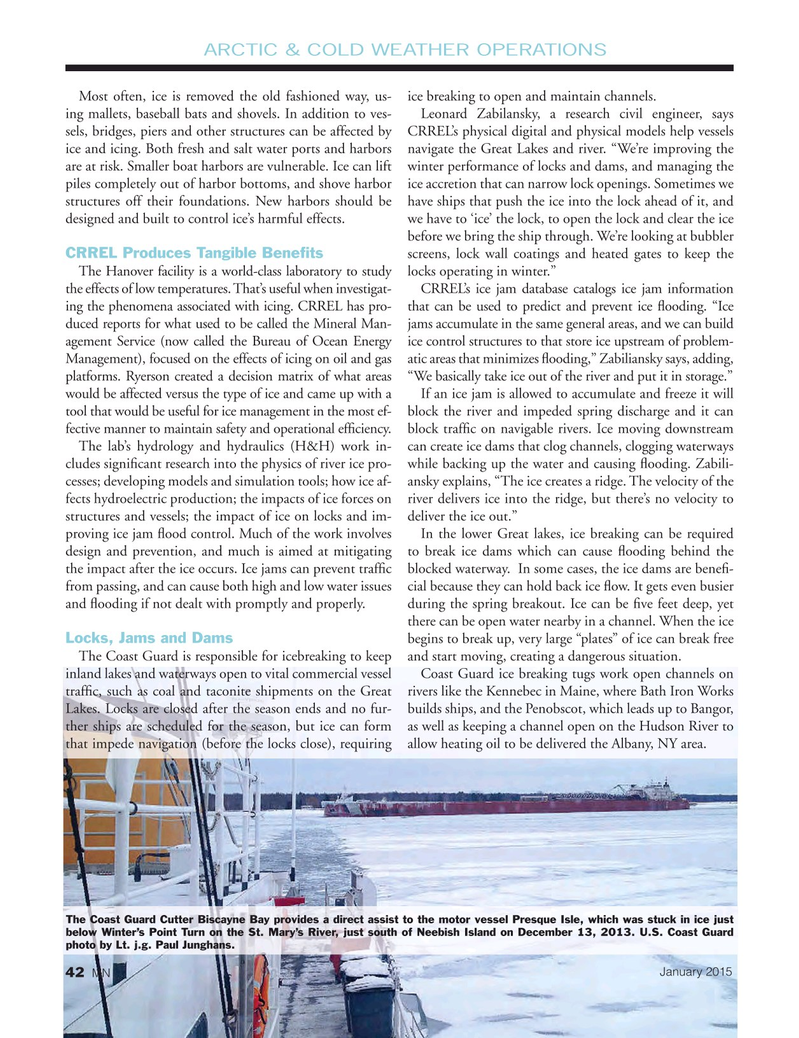
Page 42: of Marine News Magazine (January 2015)
Passenger Vessels & Ferries
Read this page in Pdf, Flash or Html5 edition of January 2015 Marine News Magazine
ARCTIC & COLD WEATHER OPERATIONS
Most often, ice is removed the old fashioned way, us- ice breaking to open and maintain channels.
ing mallets, baseball bats and shovels. In addition to ves- Leonard Zabilansky, a research civil engineer, says sels, bridges, piers and other structures can be affected by CRREL’s physical digital and physical models help vessels ice and icing. Both fresh and salt water ports and harbors navigate the Great Lakes and river. “We’re improving the are at risk. Smaller boat harbors are vulnerable. Ice can lift winter performance of locks and dams, and managing the piles completely out of harbor bottoms, and shove harbor ice accretion that can narrow lock openings. Sometimes we structures off their foundations. New harbors should be have ships that push the ice into the lock ahead of it, and designed and built to control ice’s harmful effects. we have to ‘ice’ the lock, to open the lock and clear the ice before we bring the ship through. We’re looking at bubbler
CRREL Produces Tangible Bene? ts screens, lock wall coatings and heated gates to keep the
The Hanover facility is a world-class laboratory to study locks operating in winter.” the effects of low temperatures. That’s useful when investigat- CRREL’s ice jam database catalogs ice jam information ing the phenomena associated with icing. CRREL has pro- that can be used to predict and prevent ice

 41
41

 43
43
